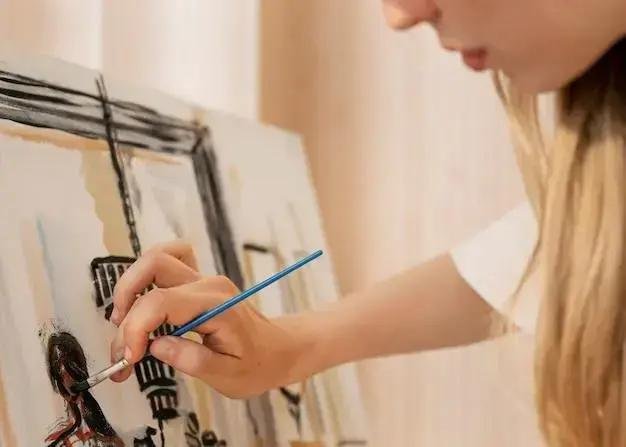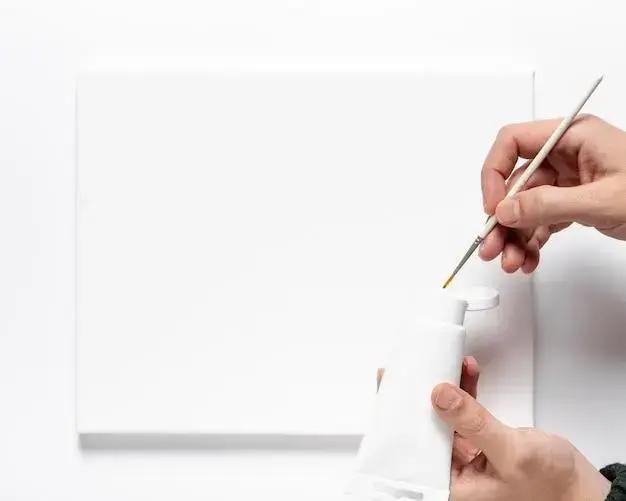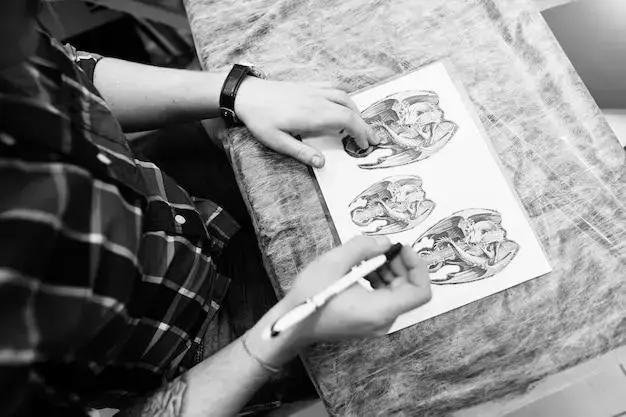Shading techniques in sketching are crucial for adding depth and dimension to your artwork.
Whether you’re a beginner or an experienced artist, mastering these techniques can elevate your drawings to the next level.
In this article, we’ll explore five essential shading techniques that can help you create more realistic and expressive sketches.
From understanding light and shadow to using erasers for highlights, these methods will enhance your skills and transform your approach to sketching.
Understanding Light and Shadow
Understanding light and shadow is the foundation of effective shading in sketching. Light defines the form of an object, while shadows create depth and dimension. When you grasp how light interacts with different surfaces, you can better represent three-dimensional shapes on a two-dimensional plane.
Start by observing how light falls on objects around you. Notice the source of light—whether it’s natural sunlight or artificial light—and how it creates highlights (the brightest areas) and shadows (the darkest areas). The position of the light source dramatically affects the shadows’ length and intensity. For instance, when the light is directly above an object, shadows will be shorter and more concentrated, while a lower light source will cast longer, softer shadows.
Next, consider the type of surface you’re sketching. Smooth surfaces reflect light differently than rough surfaces. A shiny apple will have sharper highlights and softer shadows compared to a matte rock. Practice sketching various objects under different lighting conditions to see how these principles play out in real life.
To apply this understanding in your sketches, start with a basic outline of your subject. Then, identify where the light hits and where the shadows fall. Use lighter pencil strokes for highlights and gradually build up darker tones for shadows. This approach creates a more dynamic and realistic representation of your subject.
Remember, the goal is to create a sense of volume and depth. By mastering the relationship between light and shadow, you’ll be able to breathe life into your sketches, making them not just drawings, but vibrant representations of reality.
Hatching and Cross-Hatching Techniques
Hatching and cross-hatching are two fundamental techniques in sketching that can add depth and texture to your drawings. These methods involve creating a series of parallel lines (hatching) or intersecting lines (cross-hatching) to build up tonal values and suggest form.
Hatching involves drawing closely spaced parallel lines. The closer the lines are to one another, the darker the area will appear. This technique is excellent for creating subtle gradients and can be used to indicate light and shadow. For instance, when sketching a sphere, you would apply more lines on the side facing away from the light source to create a shadow effect, while leaving the side facing the light more open.
Cross-hatching takes this a step further by layering lines at different angles. By crossing the initial set of parallel lines with another set, you can achieve a richer texture and a greater range of values. This technique is particularly useful for creating darker areas or more complex textures. For example, when sketching a tree trunk, you might use cross-hatching to convey the rough texture of the bark.
When practicing these techniques, start with light pressure on your pencil to create fine lines. As you become more comfortable, you can apply more pressure to darken the lines and build up the density. Experiment with different angles and spacing to see how it affects the overall look of your sketch.
Both hatching and cross-hatching require patience and practice, but they can significantly enhance your ability to depict light and shadow in your artwork. With these techniques in your toolkit, you’ll be able to create more dynamic and engaging sketches that capture the viewer’s attention.
Blending Techniques for Smooth Transitions
Blending techniques are essential for achieving smooth transitions in your sketches, allowing you to create more realistic and lifelike representations. This technique helps to soften harsh lines and create a seamless flow between different tones and shades.
One popular method for blending is using a blending stump, which is a tightly rolled paper tool that helps to smudge graphite or charcoal. To use a blending stump, apply your initial shading using hatching or cross-hatching, and then gently rub the stump over the shaded areas. This will help to merge the lines and create a softer appearance. Remember to clean your blending stump regularly to avoid transferring dark smudges onto lighter areas.
Another effective technique is the use of your fingers. While this can be a bit messier, it can also yield beautiful results. Lightly rub your fingertip over the shaded areas to blend and soften the graphite. Just be cautious—too much pressure can remove too much material, so it’s best to start lightly and build up as needed.
You can also experiment with tissues or cotton swabs for blending. These tools can provide a different texture and can be particularly useful for larger areas where you want a smooth finish. Simply dab or rub the tissue or cotton swab over the shaded regions to achieve the desired effect.
When blending, it’s important to maintain control over your pencil strokes and blend gradually. Start with a light application of graphite and build up layers, allowing for better control over the final look. This gradual approach ensures that your transitions remain smooth without losing the integrity of your forms.
Incorporating blending techniques into your sketches can dramatically enhance the depth and realism of your work. By mastering these methods, you’ll be able to create stunning transitions that draw the viewer in and give your sketches a polished finish.
Stippling for Texture and Depth
Stippling is a unique shading technique that uses small dots to create texture and depth in your sketches. This method can be particularly effective for adding intricate details and a sense of realism to your artwork.
The basic principle of stippling involves applying numerous tiny dots of varying density to represent different tonal values. The closer the dots are to each other, the darker the area will appear. Conversely, spacing the dots further apart will create lighter areas. This technique allows for a high level of control over the shading process, making it ideal for creating subtle gradients and textures.
To start with stippling, choose a subject that has a variety of textures, such as a fruit or an animal. Begin by lightly sketching the outline of your subject, and then gradually fill in the areas with dots. Focus on where the light hits your subject and where the shadows fall. Remember, the key to effective stippling is patience—take your time to build up the dots gradually.
One of the great benefits of stippling is its versatility. You can create a range of effects simply by varying the size and spacing of the dots. For instance, using a finer pen or pencil will yield smaller dots, which can be excellent for detailed areas, while a broader tool can create larger dots for bolder shadows.
Stippling can also be combined with other techniques, such as hatching or cross-hatching, to add even more depth and dimension to your sketches. By layering stippling with lines, you can achieve a more complex texture that enhances the overall realism of your artwork.
As you practice stippling, you’ll find that it not only improves your control over shading but also encourages a deeper observation of your subjects. This technique can transform ordinary sketches into stunning works of art, rich with detail and character.
Using Erasers for Highlighting
Using erasers for highlighting is a powerful technique that can add a striking contrast to your sketches and help emphasize key areas. While erasers are typically associated with correcting mistakes, they can also be a creative tool for enhancing your artwork.
To effectively use erasers for highlighting, start with a well-defined sketch that includes your light and shadow areas. After applying your initial shading—whether through hatching, cross-hatching, or blending—identify the spots where light naturally hits your subject. These are the areas where you’ll want to create highlights.
There are a couple of different types of erasers you can use for this technique. A kneaded eraser is particularly useful because it can be shaped to a fine point, allowing for precise highlighting. Simply pinch and roll the eraser to form a tip, then gently dab or roll it over the shaded areas to lift some graphite, revealing the lighter paper beneath.
Another option is the vinyl or plastic eraser, which is firmer and can create sharper highlights. This type of eraser works well for removing larger areas of graphite without damaging the paper. Just be cautious and use light pressure to avoid tearing the surface.
Using an eraser for highlighting can also help to create a sense of depth and dimension in your sketches. By lifting graphite from certain areas, you can enhance the contrast between light and shadow, making your subject appear more three-dimensional. This technique is especially effective when sketching reflective surfaces, such as glass or water, where highlights play a crucial role in conveying realism.
As with any technique, practice is key. Experiment with different types of erasers and techniques to find what works best for your style. Over time, you’ll discover how to effectively incorporate erasers into your workflow, turning them into an essential tool for creating dynamic and visually engaging sketches.
Conclusion
Mastering shading techniques in sketching is essential for any artist looking to enhance their work and create more lifelike representations.
From understanding light and shadow to utilizing hatching, cross-hatching, blending, stippling, and even erasers for highlighting, each technique offers unique benefits that can elevate your sketches.
By practicing these methods, you’ll develop a deeper understanding of how to manipulate light and texture, allowing you to convey emotions and depth in your art.
Remember, the key to becoming proficient in these techniques is patience and consistent practice. Don’t hesitate to experiment and find what works best for your style.
Incorporating these shading techniques into your artistic toolkit will not only improve your technical skills but also boost your confidence as an artist.
So grab your sketchbook, and start exploring the endless possibilities of shading to bring your drawings to life!
Frequently Asked Questions about Shading Techniques in Sketching
What is the best way to start learning shading techniques?
Begin by practicing basic techniques like hatching and cross-hatching. Focus on observing light and shadow in real-life objects.
How can I achieve smooth transitions in my sketches?
Use blending stumps, your fingers, or tissues to blend shaded areas for smooth transitions between light and dark.
What is stippling and when should I use it?
Stippling involves using small dots to create texture and depth. It’s great for adding intricate details and can be used in various subjects.
How do I use an eraser for highlighting effectively?
Use a kneaded eraser for precise highlights or a vinyl eraser for larger areas. Lightly dab or roll the eraser to lift graphite.
Can I combine different shading techniques?
Absolutely! Combining techniques like hatching and stippling can enhance the texture and depth of your sketches.
How do I know where to place highlights in my sketches?
Observe your subject and identify where the light hits. These areas will be your highlights, contrasting with the shaded regions.





